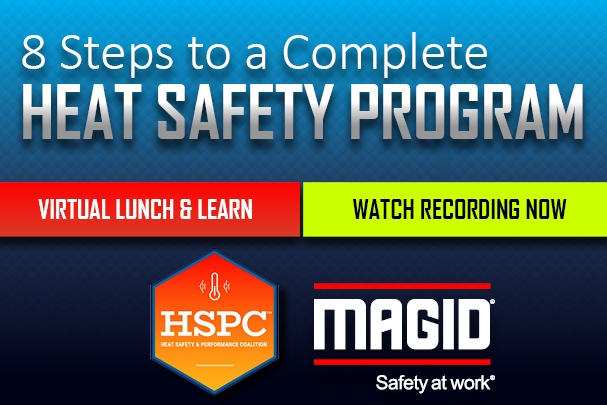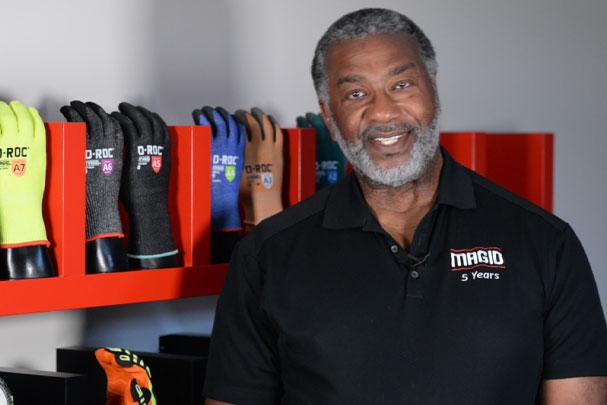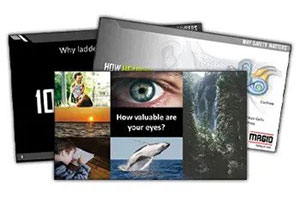
How to Prevent Cold Stress Injuries on the Job
By John Heniff, Safety Writer, Magid
When cold weather comes around, plans for protecting your workers from heat stroke turn to protecting them from trench foot, frostbite, and especially hypothermia, which was the cause of 420 worker deaths in 2019 according to the CDC. Use these tips to help your workers stay safe from cold and winter weather hazards that can cause these conditions and more!





1. Build Cold Tolerance with Shift Rotations
You can’t control the weather outside. But you can control your workers’ time in blistering winds and below-freezing temperatures by implementing staff rotations. Not only does this limit their time in the cold, but it can ensure workers only perform certain tasks during the warmest times of the day. If some workers haven’t labored in the cold before or haven’t worked in it in months, acclimatize them gradually and give them plenty of time to take breaks in warm areas so they can build up their cold tolerance, as well.
Your workers don’t have to rely on the sun or wait for the spring to warm up! Use engineering controls to make their work environment as warm as possible. OSHA recommends setting up radiant heaters in outdoor workstations. You can also put up tarps to cover large openings to shield the jobsite from winds and drafts.
For break periods, set up an area away from the cold where workers can warm up and drink warm liquids. Make sure to have cool water and electrolyte-replacing beverages on-hand as well so workers can rehydrate from sweating and respiratory fluid loss.

3. Plan for De-Icing to Minimize Slip, Trip, & Fall Hazards
Workers are at increased risk for slips, trips, and falls in colder months due to rain, sleet, snow, or ice as well as high winds. Walking surfaces can become icy and treacherous, elevated surfaces covered in ice and snow can become slip hazards, and ice and snow can hide skylights, openings, or other fall-through hazards, too. When these environmental conditions occur, add specific measures to your safety plan:
- Remind workers every day before the shift begins to be on the lookout for any hazards that can cause slips, trips, and falls.
- Salt sidewalks and clear snow from walking surfaces.
- Apply de-icing solutions to roofs and elevated areas via a lift or a ladder if your workers will be operating at a height.
- Teach your workers to walk with their center of gravity over their front leg and their arms out at their side like a penguin if they encounter slippery surfaces. This waddling motion keeps the body perpendicular to the slip hazard and lowers the risk of slipping and falling compared to their usual walking motion.

4. Provide Cold Weather Gear and Winter PPE
After all other measures have been implemented, provide your workers with all the cold weather gear they need to minimize the risk of developing cold-related health conditions or accidents. This includes:
- Insulated footwear with soles that provide added traction
- Fall protection equipment like harnesses and lanyards for slippery heights
- Winter weather gear including balaclavas, gloves, and thermal jackets
- A base layer made of a moisture-wicking material like silk, polypropylene, or wool to draw sweat away from the skin
- A waterproof and windproof outer layer that allows for ventilation
Electrical workers need specialized gear that will protect them from the cold as well as electrical shock and arc flash. In these circumstances, clothing must be arc-rated for protection greater than the danger of any arc flash hazards in their work environment. This includes wearing electrical rubber voltage gloves on top of non-synthetic insulated glove liners like 100% wool or cotton to protect them from arc flash and electrical shock.
If conditions are wet from rain, snow, or sleet, keep arc-rated rainwear, EH-rated footwear, and other rain/wet weather gear on-hand to keep workers dry and prevent the build-up of moisture that can create a path for electricity.

6. Practice Winter Driving and Safe Practices
Thousands of vehicle accidents and crashes occur every year due to snow, ice, slush, sleet, or other cold weather conditions. If your workers have to drive in treacherous environments, include winter driving tips in your safety talks, such as:
- Accelerate and decelerate more slowly than usual because icy and snow-covered roads have less traction. This makes it harder to start moving from a full stop or come to a complete stop while in motion.
- If driving up a hill, don’t apply more acceleration as this can make your wheels spin in place. Additionally, don’t stop if you’re driving uphill because the lack of traction will make it nearly impossible to get moving again. In both cases, build-up gentle inertia on a flat road before going up the hill.
- Maintain more distance than usual behind other vehicles to give yourself more time and space if you suddenly need to stop.
- Practice driving in an empty lot beforehand so you know what to do if you start to skid or the road becomes wet or icy.
- Inspect the battery, coolant, tire pressure, lights, and other parts of your vehicle at the beginning of each shift so you know it’s maintained and ready for any cold weather conditions.
- Make sure your vehicle has supplies like jumper cables, flashlights, blankets, food, and water in case of an emergency.
- Ensure your gas tank is at least half full to prevent gas line freeze.
Download a FREE Cold Weather Safety Training Class!







